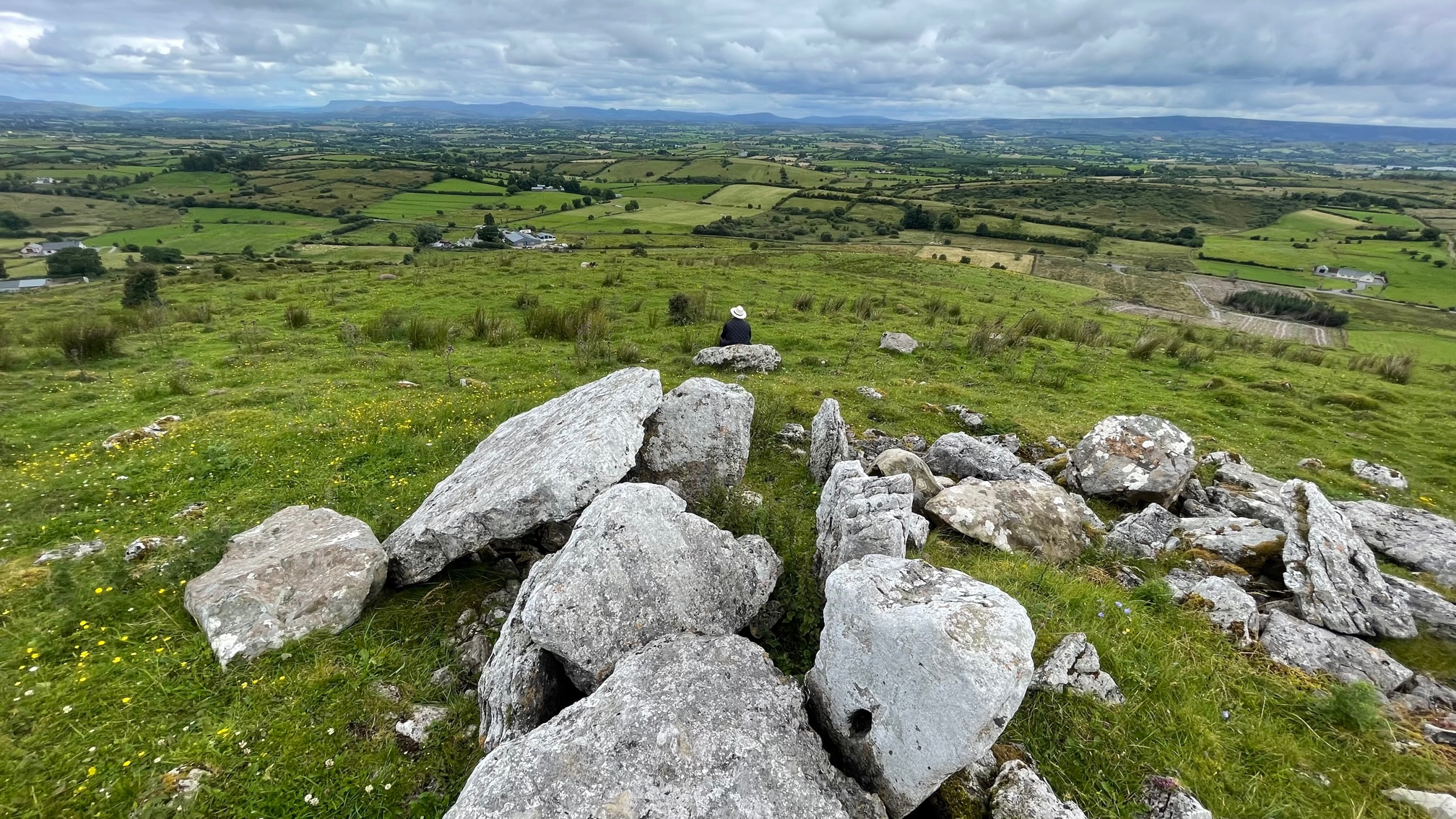Trapped in a small enclosure, surrounded on three sides by a massive quarry, but still worth visiting. The tomb lies in a northern ’spur’ of the field immediately east of the quarry entrance. The structure of the chamber is very evident and was constructed with massive, shaped blocks of stone. This would have been a fine wedge tomb once upon a time – now it seems to be just a forgotten relic, left there only because it’s a ‘protected’ monument. I’m glad we decided to check it out.


Cairn F is said to be the largest of the Cairns in Carrowkeel (though the cairn on Keshcorran, included in the megalithic ‘complex’ is bigger).

Cairn F passage grave is aligned north onto Cairn E in the distance.

The end recess of the cruciform chamber – it’s possibly got a metre-and-a-half of cairn rubble hiding a lot of its lower structure.

A view south-west over the rubble-filled chamber.

Foreground is part of the passage with a couple of lintels. Behind them is end recess of the destroyed cruciform chamber.

The gouge taken out of Cairn F by the ‘exacvators’.


The ‘court’ feature at the southern end of the long cairn.

Cairn F in the distance over the roofstone of the western chamber.


From the backstone of the chamber NNW out of the passage towards Knocknarea.

Closer in view from the rear of the undifferentiated passage grave at the NNW end of the long cairn. It’s aligned onto Knocknarea.

NNW over the line of the passage towards Knocknarea.

Standing stone/possible kerbstone to the east of Cairn D.

Over Cairn D towards F in the distance to the left and Keshcorran to the right.


Magnificent bogland foliage in front of Cairn D in Carrowkeel.

Rubble strewn floor of the subsidiary chamber at Cairn C.

I love the solidity of the subsidiary chamber roofstone with its covering of peat.

Secondary chamber under a large roofstone on the southern side of Cairn C.

Cairn C split between Carrowkeel to the left and Cloghoge Lower to the right.

The passage of Cairn C is aligned onto the cairn on Keshcorran mountain away to the West-North-West.


The northern side of Cairn C in Cloghoge Lower townland.


Looking west – the School Cave is visible above the barrow, and in turn, above the cave, is the ridge with Carnaweeleen passage grave.


The barrow, with its robbed-out centre, is to the left of the middle of the photo. Next to it is an ‘enclosure’ or rath.

The view of Lough Labe from the north-eastern edge of the cairn. Who wouldn’t want to be buried here?


Looking north-east over the exposed part of the cairn towards Lough Labe.

The exposed top of the cairn, looking south towards Lough Gowra.

The cairn on Sheecor as we first saw it, looking south. The hill to the right has it’s own cairn.

The tomb is to the left of the middle of the shot; Thomas stands to the left of Poulagaddy cave entrance.

Cave entrance (Poulagaddy, The Thief’s Hole) in the foreground, with the tomb in the near distance.




Holed orthostat at the passage entrance – a natural solution pit I reckon.


From the rear of the chamber – the passage faces north-east.

On a spur to the north-east of Keshcorran, the ridge to the left of this shot.

Magnificently placed Cairn B, in Treanscrabbagh townland.

Light enters the back of the cave through a small aperture – the walls here have a man-made look to them because of the quirky limestone geology.




The School Cave in the face of the cliff in Carnaweeleen townland . The ridge behind it to the left has Carnaweeleen passage tomb.